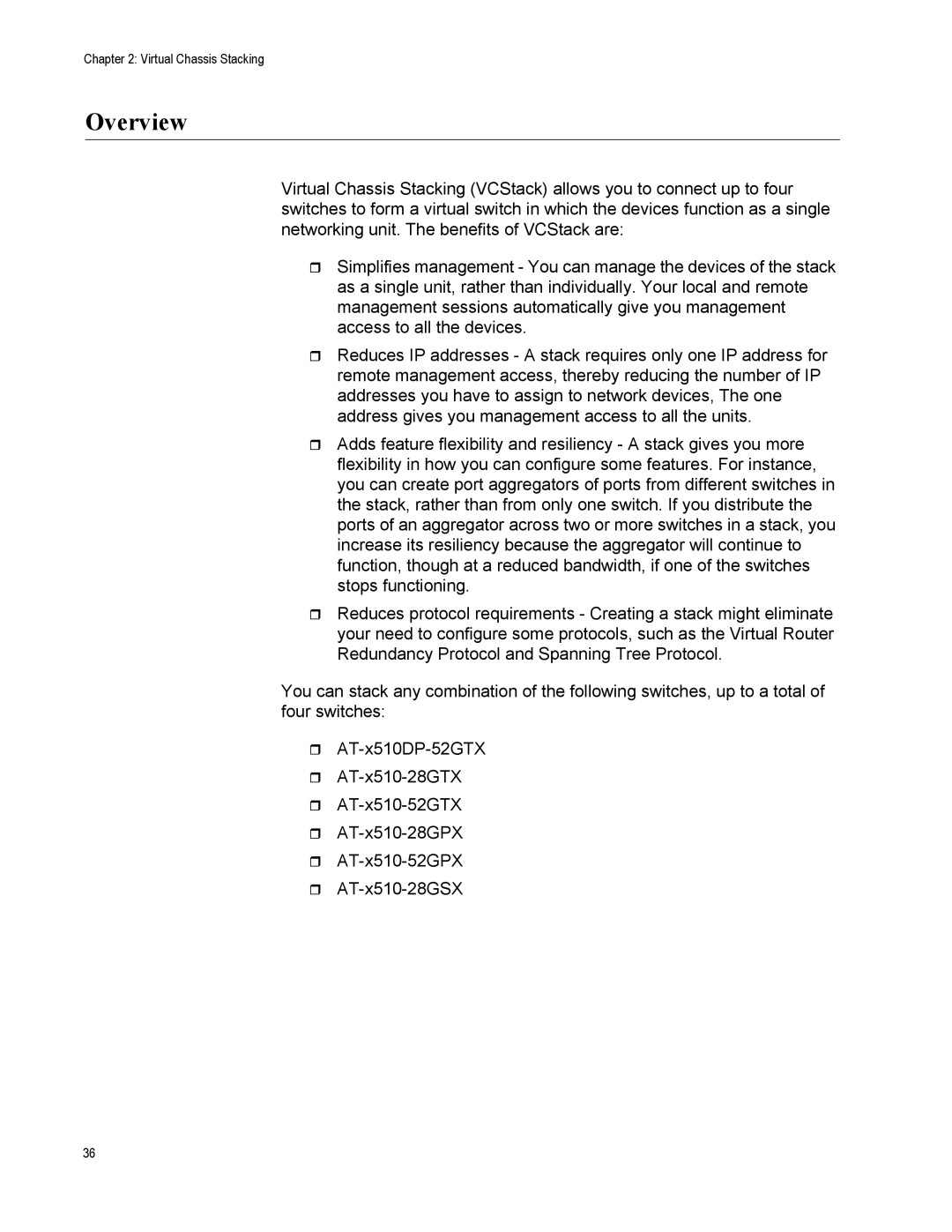Chapter 2: Virtual Chassis Stacking
Overview
Virtual Chassis Stacking (VCStack) allows you to connect up to four switches to form a virtual switch in which the devices function as a single networking unit. The benefits of VCStack are:
Simplifies management - You can manage the devices of the stack as a single unit, rather than individually. Your local and remote management sessions automatically give you management access to all the devices.
Reduces IP addresses - A stack requires only one IP address for remote management access, thereby reducing the number of IP addresses you have to assign to network devices, The one address gives you management access to all the units.
Adds feature flexibility and resiliency - A stack gives you more flexibility in how you can configure some features. For instance, you can create port aggregators of ports from different switches in the stack, rather than from only one switch. If you distribute the ports of an aggregator across two or more switches in a stack, you increase its resiliency because the aggregator will continue to function, though at a reduced bandwidth, if one of the switches stops functioning.
Reduces protocol requirements - Creating a stack might eliminate your need to configure some protocols, such as the Virtual Router Redundancy Protocol and Spanning Tree Protocol.
You can stack any combination of the following switches, up to a total of four switches:
36
